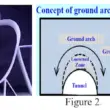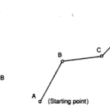The individual components of the projects are mentioned out as the scope through charts. These charts are arranged in a logical order. These will be arranged such a way that proper relationship is shown and expressed through this chart.
 |
| Advantages and Disadvantages of PERT |
Time & Cost in PERT?
The PERT technique is event oriented project evaluation technique, where the time and cost of each event, that comprise a project is taken into consideration. Each event in PERT is specified to understand the resources and the time that is required to complete that project.
PERT is implemented in projects that are non- repetitive. So these are not developed based on a historic background as in the case of CPM (Critical path Method).
PERT gain many advantages that help the project management team achieve their goals with efficiency. But every method will have some disadvantages too.
Here, we will discuss the advantages and disadvantages of the PERT.
Advantages of the PERT
The main advantages of PERT are:
1. PERT analyze the uncertainties and possible solution of the project. Hence, the project manager will know the defects and issues in the project execution. This will hence help in solving the pitfalls faced in the project planning. Unexpected surprises and wastage due to these issues can be avoided and minimized to a large extend. PERT analysis will help in determining all the essential factors that will help in the execution of a successful project.
2. PERT provides tools that will help in forecasting the schedule and changes due to any unexpected impacts. Most of the potential changes, that have high involvement in the project completion can be identified early so that preventive measures can be taken.
3. PERT identifies the most critical activities in the chart and give more focus for them. This controlling on critical activities will help in utilizing the resources effectively.
4. PERT enables constant review along with their updation based on the daily reports and the feedback received from the subordinates. In order to ensure
Like Us on Facebook!
that the process to be done systematically, all the management levels shall be vigilant and involved.
5. PERT helps in improving the communication system followed in the
organization. The personal role of every individual in the project is represented through a task relationship graph. This clearly states the roles and the responsibilities of each individual.
6. PERT is more used in the planning of large projects which is unique in
nature. The project is divided into events. Every event in a PERT chart is defined based on the:
➢ Time required for the completion of the event
➢ What precedes the event?
➢ What succeeds the event?
7. PERT collects information from all parts of the department to bring up the best chart for the projects. This will directly or indirectly help in bringing proper coordination of the project thus helping the decision-making process during critical situations. The PERT process will involve the combination of data that is both quantitative and qualitative which will facilitate proper coordination of the project.
Subscribe Us on YouTube!
Disadvantages of PERT
1. PERT is a time-oriented method. Time will be the main concern required for the completion of a particular project activity. This will clearly demand for the time duration required for the completion of each activity. As PERT deals with unique project and unique construction method, the time allocation is a difficult task.
2. PERT method of project planning will consume large amount of labor. This is the case, both in management side and execution side. As time is the main target, the management won’t hesitate to invest money.
3. PERT Planning will require the collection of fresh data for the fresh project.
This will make the data collection procedure a tedious process. Sometime this will make the data collected to be less accurate. This will bring inaccuracy in time and the cost that is estimated for the events and the total project. High chances of biasing are the end results of such issues.
4. PERT method won’t work good if the main project is a combination of two
projects, that will require the sharing of resources.
5. The changes in the preceding event or the succeeding event will result in the failure of the whole method.
6. The PERT charts becomes more complicated with the increase in the
activities, as there will be dependent tasks in hundreds.
7. PERT method is expensive in nature
8. PERT is a combination of predictions as there is no past history to compare with. This predictions will result in the inaccuracy of the project.
No trial and error method is followed for this issue. All assumptions put forward have to be justifiable and have a reason before their implementation.
Reference
1. Operations Research, Sivarethinamohan
2. Project Planning and Control with PERT & CPM, Dr. B.C. Punmia & K.K.
Khandelwal


















